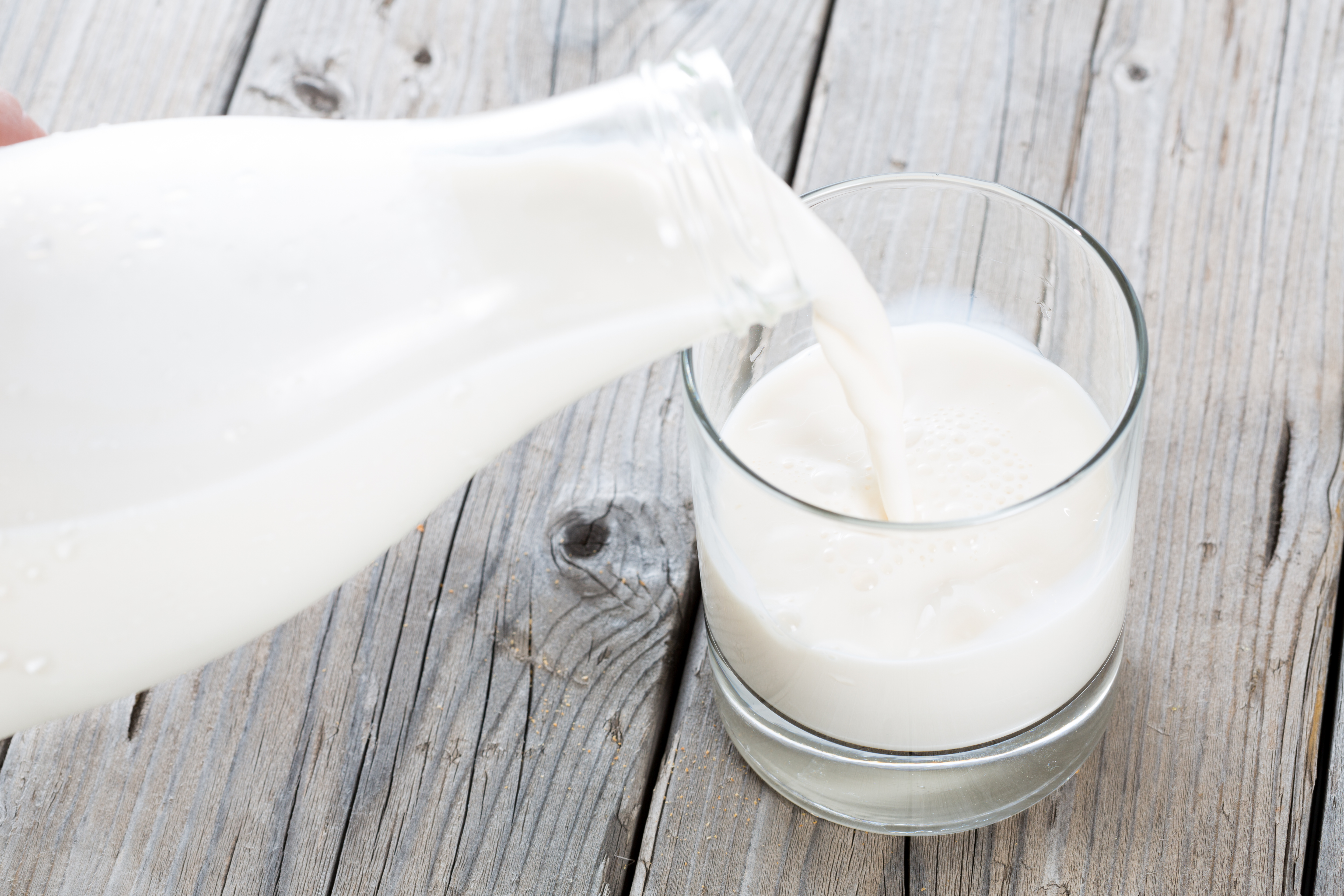Milk, Not Only for Children?
What it is Milk is a fluid produced by the mammary glands of mammals made to give the offspring energy and important nutrients in the beginning o…
- Published: 11/15/2017
- Categories:
- 4 min. read

- Published: 11/15/2017
- Categories:
- 4 min. read
Milk is a nutritious food specifically produced to give an offspring the best conditions to grow and develop in the beginning of life, but what about the health effects of drinking milk after those first months or years of life? This article will focus on some of the health effects of milk.
What it is
Milk is a fluid produced by the mammary glands of mammals made to give the offspring energy and important nutrients in the beginning of their lives.
Today many consume milk and dairy products, mainly from cattle, not only as children but also throughout their whole lives, but how healthy is it really?
Milk and dairy products are very versatile food groups that are used in many different dishes or eaten as is and is therefore not surprising that many people are enjoying the consumption of these products well into adulthood.
Milk consumption
The mean consumption per capita of milk varies a lot between individuals and countries. In 2014 the milk consumption per capita was 196 mL/d in the United States, 236 mL/day in Sweden and <60 mL/day in Bulgaria (Mullie et al., 2016).
Nutritional value
Milk is a fluid made to sustain life and it´s therefore not surprising that it contains many important nutrients and energy. Milk is especially rich in protein, calcium, phosphorous and vitamin A. The fat-soluble vitamin (Vitamin A, D, E) content in milk is dependent on fat content and therefore lower fat milk contains less fat-soluble vitamins (Pereira, 2014). However, in many countries milk is fortified with vitamin A and D.
Milk is high in saturated fats (70% of the fats, 30% unsaturated fats) and contains the sugar lactose, which is broken down by the enzyme lactase. Some people (actually, MOST individuals) lack this enzyme and can therefore not break down this sugar, causing lactose intolerance. This, in turn, means that lactose can be broken down (fermented) in the colon by bacteria (to carbon dioxide and methane etc.) instead which can cause different symptoms including abdominal cramps, bloating, diarrhea, nausea, and vomiting. The amount of lactose tolerable can vary between individuals (Pereira, 2014). Consumption of the enzyme responsible for the degradation of lactose, lactase, can allow for consumption of products containing lactose.
The nutritional value of milk can be influenced by environmental conditions and nutrition status of the animal among other factors (Pereira, 2014).
In table 1, the nutritional composition of milk can be seen.

Types of protein in milk
The protein in milk is usually divided into two different types, whey, and casein. Whey represents around 20% of the proteins in milk and casein 80%. These proteins are high-quality proteins, meaning they contain the essential amino acids that we need in a sufficient amount, the protein is easily digestible and has a high bioavailability (we can absorb and utilize most of it) (Pereira, 2014). Whey protein is a soluble protein (Pereira, 2014) and fast digesting while casein is an insoluble (Pereira, 2014) slower digesting protein.
Proteins are important for many functions in the body and have for example been shown to preserve muscle mass on a diet and to increase muscle mass when increasing weight (Devries and Phillips, 2015).
Fredrik Wernstål is a final year medical student with a passion for nutrition, training, performance, and health. His goal is to help people reach a healthier and happier life by providing research-based advice.
References
Devries, M.C., Phillips, S.M., 2015. Supplemental protein in support of muscle mass and health: advantage whey. J. Food Sci. 80 Suppl 1, A8–A15. doi:10.1111/1750-3841.12802
Gijsbers, L., Ding, E.L., Malik, V.S., de Goede, J., Geleijnse, J.M., Soedamah-Muthu, S.S., 2016. Consumption of dairy foods and diabetes incidence: a dose-response meta-analysis of observational studies. Am. J. Clin. Nutr. 103, 1111–1124. doi:10.3945/ajcn.115.123216
Guo, J., Astrup, A., Lovegrove, J.A., Gijsbers, L., Givens, D.I., Soedamah-Muthu, S.S., 2017. Milk and dairy consumption and risk of cardiovascular diseases and all-cause mortality: dose–response meta-analysis of prospective cohort studies. Eur. J. Epidemiol. 32, 269–287. doi:10.1007/s10654-017-0243-1
Lu, W., Chen, H., Niu, Y., Wu, H., Xia, D., Wu, Y., 2016. Dairy products intake and cancer mortality risk: a meta-analysis of 11 population-based cohort studies. Nutr. J. 15, 91. doi:10.1186/s12937-016-0210-9
Mullie, P., Pizot, C., Autier, P., 2016. Daily milk consumption and all-cause mortality, coronary heart disease and stroke: a systematic review and meta-analysis of observational cohort studies. BMC Public Health 16, 1236. doi:10.1186/s12889-016-3889-9
Pereira, P.C., 2014. Milk nutritional composition and its role in human health. Nutr. Burbank Los Angel. Cty. Calif 30, 619–627. doi:10.1016/j.nut.2013.10.011
Turck, D., 2013. Cow’s milk and goat’s milk. World Rev. Nutr. Diet. 108, 56–62. doi:10.1159/000351485
Wang, W., Wu, Y., Zhang, D., 2016. Association of dairy products consumption with risk of obesity in children and adults: a meta-analysis of mainly cross-sectional studies. Ann. Epidemiol. 26, 870–882.e2. doi:10.1016/j.annepidem.2016.09.005
All of the content and media on Lifesum is created and published for information purposes only. It is not intended to be used as a substitute for medical advice or treatment. Users should always consult with a doctor or other health care professional for medical advice. If you have or think you are at risk of developing an eating disorder, do not use the Lifesum app and seek immediate medical help.


